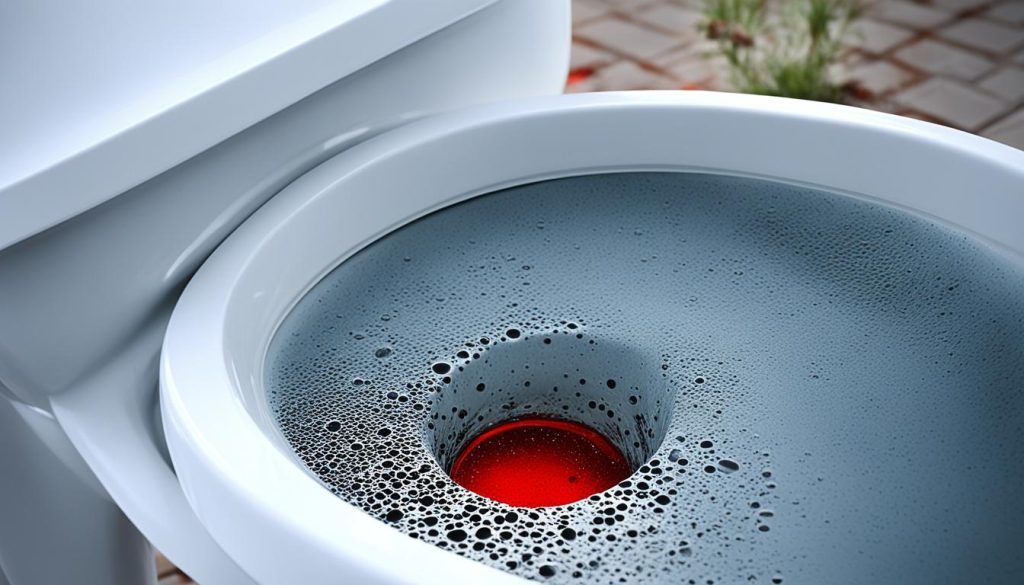Plumbing Cleanout Requirements: Essential Guide
Did you know that regular sewer line maintenance can prevent clogs, leaks, and foul odors in your home? It’s true! Sewer lines are an essential part of every home’s drainage system, and neglecting them can lead to costly emergencies. One crucial aspect of sewer line maintenance is understanding the requirements for cleanouts. Cleanouts are fittings installed in sewer lines that provide access for cleaning and maintenance. In this essential guide, I will explain everything you need to know about plumbing cleanout requirements, guidelines, regulations, and codes.
Key Takeaways:
- Regular sewer line maintenance is crucial to prevent clogs, leaks, and foul odors in your home.
- Cleanouts are fittings installed in sewer lines that provide access for cleaning and maintenance.
- Understanding the requirements, guidelines, regulations, and codes for plumbing cleanouts is essential.
- By following cleanout requirements, you can maintain the functionality and longevity of your sewer system.
- Consulting a professional plumber is recommended for major blockages and main line issues.
Understanding Cleanouts and Sewer Systems
When it comes to maintaining sewer lines, cleanouts play a crucial role. These fittings are strategically installed at specific points in sewer systems to allow easy access for cleaning and maintenance. By understanding the basics of cleanouts and sewer systems, homeowners can ensure proper maintenance and prevent potential issues down the line.
Cleanouts are typically found in three key locations within the sewer system. The first is at the main elbows, where the sewer lines change direction. This allows plumbers to access and clean the system efficiently. The second location is at the far end of the system, ensuring comprehensive cleaning coverage. Finally, cleanouts are also installed where the system meets the municipality’s sewer system to provide seamless connectivity and easy maintenance.
It is essential to differentiate between cleanouts and cleaning out. Cleanout refers to the physical fixture itself, while cleaning out refers to the activity of snaking or maintaining the sewer system. By clearly understanding and correctly using these terms, homeowners can effectively communicate with plumbers and address any sewer line issues.
The Sewer System vs. Drain System
To properly maintain sewer lines, it is important to distinguish between the sewer system and the drain system. The sewer system refers to the portion of the drainage system located outside the home. It includes the main sewer line and its associated cleanouts. On the other hand, the drain system refers to the portion inside the home that connects to sinks, toilets, and other fixtures. Understanding this differentiation allows homeowners to tackle maintenance tasks accurately and efficiently.
By familiarizing yourself with cleanouts and how they function within sewer systems, you can take proactive steps to maintain the health and functionality of your sewer lines.
Locating the Main Sewer Line
The main sewer line is a crucial component of your home’s drainage system. It serves as the central pipe that collects and carries wastewater from all the drain pipes in your house. Locating the main sewer line is essential for maintenance and troubleshooting purposes.
In most homes, the main sewer line can be found in the basement. It runs along the perimeter of the basement, typically towards the area where it connects to the city’s sewer system. The main sewer line is commonly made of white plastic known as PVC or black cast iron in older homes.
One important feature to take note of is the sewer cleanout location. Cleanouts are access points installed at the ends of the main sewer line. These cleanouts provide plumbers with easy access to perform maintenance tasks such as snaking, jetting, or blowing out the system.
Having knowledge of the sewer cleanout location is beneficial in case of any issues with your sewer line. Being able to identify and access the cleanout quickly can save time and effort when it comes to resolving drainage problems.
Here is a visual representation of the main sewer line and cleanout location:
| Component | Material | Location |
|---|---|---|
| Main Sewer Line | PVC or Cast Iron | Basement, along the perimeter towards the connection with the city sewer system |
| Sewer Cleanout | N/A | At the ends of the main sewer line |
By familiarizing yourself with the main sewer line and cleanout location, you can better understand the layout of your home’s drainage system and effectively address any sewer line issues that may arise.
Signs and Methods for Cleaning Sewer Lines
Recognizing the signs of a clogged sewer line is crucial for timely maintenance. If you notice any of the following indicators, it may be time to clean your sewer lines:
- Slow drainage: If water is taking longer than usual to drain from sinks, toilets, or showers, it could be a sign of a clog in the sewer line.
- Foul odors: Unpleasant smells coming from drains or sewer pipes are often caused by stagnant water and debris in the sewer line.
- Gurgling sounds: If you hear gurgling noises when you flush the toilet or run water in the sink, it could indicate a blockage in the sewer line.
- Frequent clogs: Multiple clogs occurring simultaneously in different fixtures may suggest a clog in the main sewer line.
While minor issues can be addressed using do-it-yourself (DIY) methods, major blockages and main line issues should always be handled by a professional plumber to ensure safety and prevent further damage.
DIY Sewer Line Cleaning Methods
For minor sewer line issues, you can try the following DIY cleaning methods:
- Using baking soda and vinegar: Create a mixture of equal parts baking soda and vinegar. Pour it down the drain and let it sit for about an hour. Then, flush it with hot water to break down grease and flush out debris.
- Enzyme-based cleaners: Enzyme cleaners can effectively break down waste and grease in sewer lines. Follow the instructions on the cleaner’s packaging for optimal results.
| DIY Method | Pros | Cons |
|---|---|---|
| Baking soda and vinegar | 1. Easily accessible ingredients 2. Safe for pipes and the environment 3. Removes minor clogs and odors |
1. May not be effective for severe blockages 2. Requires time for the mixture to work |
| Enzyme-based cleaners | 1. Effective in breaking down waste and grease 2. Can help prevent future clogs |
1. May be more expensive than other DIY methods 2. Requires time for the enzymes to work |
Remember, if DIY methods don’t resolve the issue or if you’re unsure about tackling the problem yourself, it’s best to consult a professional plumber. They have the expertise and equipment to handle major sewer line blockages and ensure the system is functioning properly.
Tips for Maintaining Drain Line Cleanliness
Regular maintenance of drain lines is crucial for preventing clogs and keeping the system running smoothly. Here are some simple yet effective tips for maintaining clean drains:
1. Avoid pouring grease down the drain: Grease can solidify and cause blockages in the drain pipes. Instead, let it cool and dispose of it in the garbage.
2. Pour boiling water down the sink and shower drains: Once a week, pour boiling water down these drains to help break down any buildup and keep them flowing.
3. Use a mixture of dish soap and boiling water: For regular maintenance, mix dish soap with boiling water and pour it down the drains to remove grease and debris.
4. Use baking soda and vinegar: This natural solution can be an effective way to clean drain pipes. Pour a cup of baking soda followed by a cup of vinegar down the drain, let it sit for a few hours, and then flush it out with hot water.
5. Dump salt and vinegar down the drain: A mixture of salt and vinegar can help prevent odors and keep the drain lines clean. Simply pour a combination of these ingredients down the drain and flush with water.
6. Regularly use a plunger: Having a plunger handy can help you quickly address minor clogs. Use it to create pressure and dislodge any obstructions in the drain.
By following these tips, you can maintain clean and functional drain lines, reducing the risk of clogs and ensuring a smoothly running plumbing system in your home.
- Investing Wisely: How Windows & Doors in Boost Property Value and Financial Health - April 24, 2025
- The Financial Impact of Personal Injuries: Why Legal Help Matters for Business Owners - April 16, 2025
- The Hidden Financial Costs of Domestic Assault: What Business Owners Need to Know - April 16, 2025













